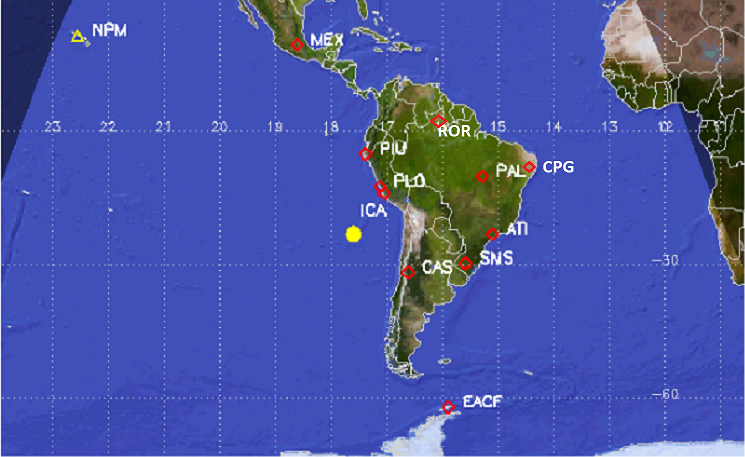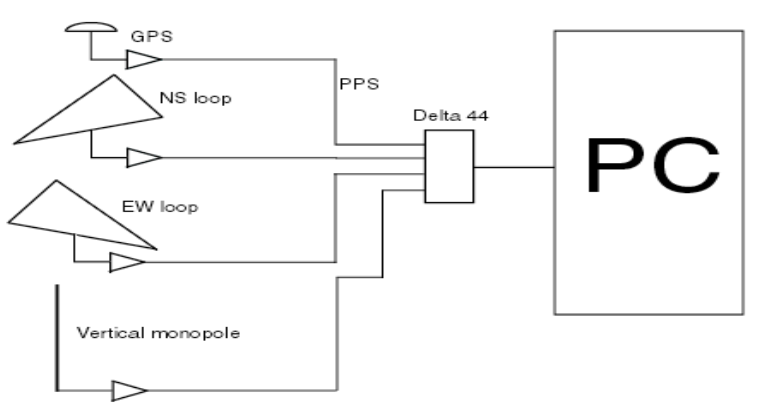
The above figure shows SAVNET in its optimal configuration consisting of 11 receiving/tracking VLF stations, located in Latin America and Antarctica. Five stations are in Brazil, 3 in Peru, 1 in Argentina, 1 in Mexico and 1 in the Brazilian Antarctic Research Station Comandante Ferraz. (The stations MEX and ICA were recently deactivated). The receivers track signals from strong communication transmitters (e. g. NPM) many of them part of the deactivated Omega Network.

Each receiver is composed of 3 sensors; 2 sensitive to the magnetic field of the incoming wave (square loop antennae), and 1 to its electric field (a whip antenna). Amplified signals are digitalized using a commercial audio card. Design and construction of sensors and pre–amplifiers were undertaken at the Radio Observatorio do Itapetinga–INPE (Brazil). A precise and stable time reference on time scales of hours or days is needed to measure phase variations along the same time intervals. For this a GPS system providing a 1 pulse per second (1–pps) is used. Accurate phase measurements on long time scales are achieved by locking the sound card crystal to the 1–PPS. The VLF tracking receiver prototype was tested in early 2007. Early in 2008, most receivers were installed.